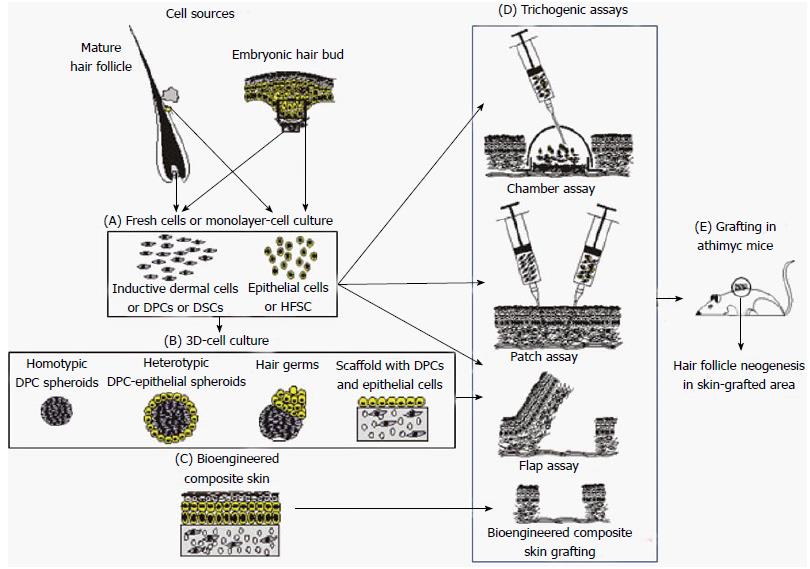Copyright
©The Author(s) 2015.
World J Stem Cells. May 26, 2015; 7(4): 711-727
Published online May 26, 2015. doi: 10.4252/wjsc.v7.i4.711
Published online May 26, 2015. doi: 10.4252/wjsc.v7.i4.711
Figure 1 Hair follicle neogenesis using isolated epithelial and dermal cells.
Inductive-dermal and Epithelial Cells can be obtained from adult tissue or embryonic sources. Isolated cells by enzymatic digestion of living tissues, or monolayer cell cultures (A) can be used in the trichogenic assays (D): Chamber assay; Patch assay; and flap assay. Moreover, isolated cells can be cultured in 3D-conditions, allowing them to create their own extracellular matrix as in the case of homotypic and heterotypic spheroids and hair germs (B). Also, cells can be seeded on a precast scaffold used for cellular support or used to produce a bioengineered composite skin (C). Any of these constructs can be evaluated by the trichogenic assays (D): Flap assay; and Bioengineered composite skin grafting. All these trichogenic assays are mainly performed in the back-skin of athymic mice in order to avoid immune rejections and to take advantage of its bare-skin (E). DPCs: Dermal papilla cells; DSCs: Dermal sheath cells; HFSC: Hair follicle stem cells.
- Citation: Balañá ME, Charreau HE, Leirós GJ. Epidermal stem cells and skin tissue engineering in hair follicle regeneration. World J Stem Cells 2015; 7(4): 711-727
- URL: https://www.wjgnet.com/1948-0210/full/v7/i4/711.htm
- DOI: https://dx.doi.org/10.4252/wjsc.v7.i4.711









